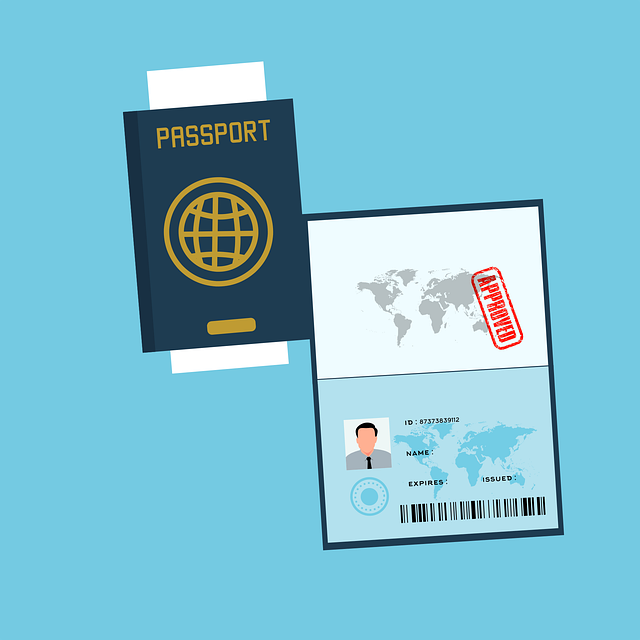The transportation sector faces significant security challenges from diverse threats like terrorism, human trafficking, and illegal goods. To mitigate these risks, robust security protocols including advanced screening technologies and rigorous background checks are essential. Background verification, scrutinizing education, employment, and criminal records, is a vital tool for enhancing transportation safety checks in the evolving digital landscape. Digital solutions streamline processes, enable real-time data sharing, and facilitate accurate biometric identification, significantly improving security efficiency. Case studies from major airports and transit systems demonstrate that comprehensive pre-employment screening and advanced technology integration have led to substantial decreases in security breaches and improved safety ratings, emphasizing the effectiveness of background verification in maintaining robust transportation safety checks.
“The transportation sector, a vital cog in global economies, faces unprecedented security challenges. From passenger safety to cargo protection, vulnerabilities pose significant risks. This article explores the critical role of comprehensive background verification as a robust security measure for the industry. We delve into how this process, once a cumbersome task, has evolved through digital transformation, enhancing transportation safety checks. By examining real-world case studies, we highlight successful implementations and their profound impact on fortifying security measures across various modes of transport.”
- Transportation Sector Vulnerabilities and the Need for Robust Security Measures
- Background Verification: A Comprehensive Tool for Risk Mitigation
- Enhancing Safety Checks: From Paperwork to Digital Platforms
- The Role of Technology in Streamlining Verification Processes
- Case Studies: Successful Implementation and Its Impact on Transportation Security
Transportation Sector Vulnerabilities and the Need for Robust Security Measures

The transportation sector faces unique challenges when it comes to security, with various vulnerabilities that require robust and comprehensive measures to mitigate risks. From bustling airports to busy seaports and bustling road networks, these hubs often serve as entry points for potential threats, including terrorism, human trafficking, and the illegal transport of goods. With large numbers of people and vehicles moving constantly, ensuring transportation safety checks is paramount.
The need for tight security in this sector is evident when considering the devastating impacts of previous incidents. The successful implementation of security protocols, such as advanced screening technologies and stringent background verification processes, can significantly reduce these risks. By strengthening these measures, authorities can ensure the safety of passengers, crew members, and cargo, fostering a secure environment for all involved.
Background Verification: A Comprehensive Tool for Risk Mitigation

Background verification is a comprehensive tool that plays a pivotal role in mitigating risks within the transportation sector. By delving into an individual’s history, education, employment, and criminal records, transportation safety checks become an indispensable process for ensuring the security of passengers, drivers, and the overall integrity of various modes of transport. This meticulous screening method helps identify potential threats, such as unlicensed or fraudulent operators, thereby enhancing overall operational safety.
In today’s digital era, where security concerns are ever-evolving, these thorough background verifications are crucial in anticipating and preventing malicious activities. They enable transportation companies to make informed decisions, fostering a culture of vigilance and responsibility. As the transportation industry continues to grow and adapt, robust background checks remain a cornerstone of maintaining a safe and secure environment for all stakeholders involved.
Enhancing Safety Checks: From Paperwork to Digital Platforms

In recent years, the transportation sector has witnessed a significant shift from traditional, paperwork-heavy safety checks to more streamlined and efficient digital platforms. This transition is driven by the need for enhanced security and improved operational effectiveness. Digitalization enables real-time data sharing and cross-verification, reducing human errors and potential security gaps that could be exploited by malicious actors. By implementing robust digital platforms, transportation companies can conduct comprehensive background verifications, ensuring only trusted individuals gain access to sensitive areas or operate vehicles.
This evolution in safety checks goes beyond mere convenience; it’s a critical step towards fortifying the entire transportation ecosystem. Digital solutions allow for more intricate data analysis, enabling authorities to identify patterns and potential risks more swiftly. Through advanced algorithms and biometric identification, background verifications become more accurate and reliable, further bolstering transportation safety checks and contributing to a safer overall environment.
The Role of Technology in Streamlining Verification Processes

The digital age has brought about transformative changes in how background verification is conducted, significantly enhancing transportation sector security. Advanced technology plays a pivotal role in streamlining these processes, ensuring faster and more accurate results. Online databases and biometric identification systems have revolutionized traditional verification methods. These technologies allow for real-time cross-referencing of vast amounts of data, enabling efficient screening of individuals against criminal records, known threats, and adverse information.
For instance, facial recognition software can quickly match identities during transportation safety checks, while automated data analytics can detect patterns and anomalies in personal information, flagging potential risks. Additionally, digital record-keeping simplifies the verification process, making it more accessible and less prone to human error. This technological integration not only expedites security checks but also strengthens the overall security posture of the transportation industry by providing a robust layer of protection against unauthorized access and potential threats.
Case Studies: Successful Implementation and Its Impact on Transportation Security

In recent years, several case studies have highlighted the significant impact of robust background verification systems on enhancing transportation security. One notable example involves a major international airport that implemented a comprehensive pre-employment screening process for all staff members, including security personnel and ground handlers. This initiative involved extensive data validation, criminal record checks, and reference interviews, ensuring only trustworthy individuals gained access to sensitive areas. The results were remarkable: a substantial decrease in security breaches and an improved overall safety rating for the airport.
Another successful story comes from a major transit system that integrated advanced background verification tools into their recruitment process. By utilizing technology to streamline and automate checks, they could conduct thorough investigations of applicants’ pasts, including social media presence and open-source intelligence. This proactive approach led to the prevention of potential threats, such as individuals with known extremist connections gaining positions within the organization. These case studies demonstrate that effective background verification is not just a compliance measure but a powerful tool for maintaining and enhancing transportation safety checks.














